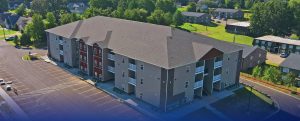Los Angeles, CA Industrial Market Report
Market Overview
Los Angeles serves as a vital industrial hub in the U.S., acting as the focal point for the expansive Southern California industrial market, spanning two billion square feet. The demand for industrial properties originates from the 20 million inhabitants of Southern California and the influx of goods through the neighboring Los Angeles and Long Beach ports, which collectively manage close to one-third of all imports entering the country. Demand has been affected by reduced imports from Asia, resulting in a 30 percent decline in loaded inbound containers during the first four months of 2023 compared to the previous year. Therefore, market conditions have weakened, causing the vacancy rate to rise.
Highlights
- The majority of industrial development in Southern California occurs in the Inland Empire, a region where land is more affordable and readily available.
- The vacancy rate has risen to 3.7% from its previous record low of 1.7% in Q1 2021.
- Year-over-year, there have been net deliveries of 2.1 million square feet.
- The shift in market conditions has led to slower rent growth, with rents only changing by 0.3% in the last quarter, a significant deceleration compared to previous quarters when rents grew by 2.0%.
Rents | Vacancy | Construction
The percentage of vacant properties has risen from a record low of 1.7 percent in Q1 2021 to 3.7 percent. Flex properties have a higher vacancy rate of 4.7 percent compared to logistics and specialized assets, which have rates of 3.8 percent and 3.1 percent, respectively. This difference has persisted for nearly 10 years. The availability rate is now 5.5 percent, and several tenants are returning space to the market. The amount of sublet space that can be leased has doubled from 4.1 million square feet in 2022 to 8.0 million square feet. Furthermore, the net absorption rate has been negative for five straight quarters, including Q2 2023. As vacancies have increased, the rate at which rents are growing has slowed. Over Q1 2023, rents have only changed by 0.3 percent. However, industrial rents in Los Angeles remain 8.6 percent higher than a year ago. Looking at the bigger picture, rent increases in Los Angeles have outpaced most major markets in the U.S. over the long term. In the past 10 years, Los Angeles has seen average annual rent growth of 9.3 percent compared to the U.S. average of 7.7 percent.
Over the past 10 years, the Los Angeles industrial market has witnessed the completion of 42.9 million square feet of new space. However, 29.9 million square feet of space has been taken off the market during that same period. Within the last year, net deliveries totaled 2.1 million square feet.
The ongoing construction pipeline is expanding, with 7.8 million square feet currently under construction in the Metropolitan area.
Los Angeles, by the numbers in the past 12 months
- Vacancy Change (YOY): 1.7%
- Net Absorption SF: 14.6M
- Deliveries SF: 3M
- Rent Growth: 8.6%
- Sales Volume: $7.7B
Sales
In H1 2023, industrial sales activity started easing as increasing interest rates impacted investors. The year-to-date sales volume currently stands at $2.5 billion, compared to a record high of $9.3 billion in 2022. Price growth has gradually slowed in recent quarters, aligning with the moderation of rent growth. However, certain investors are still willing to pay a premium for properties in the Los Angeles metro area, as the average market price is $340 per square foot, surpassing the national average. Additionally, the region’s cap rates are among the country’s lowest.









